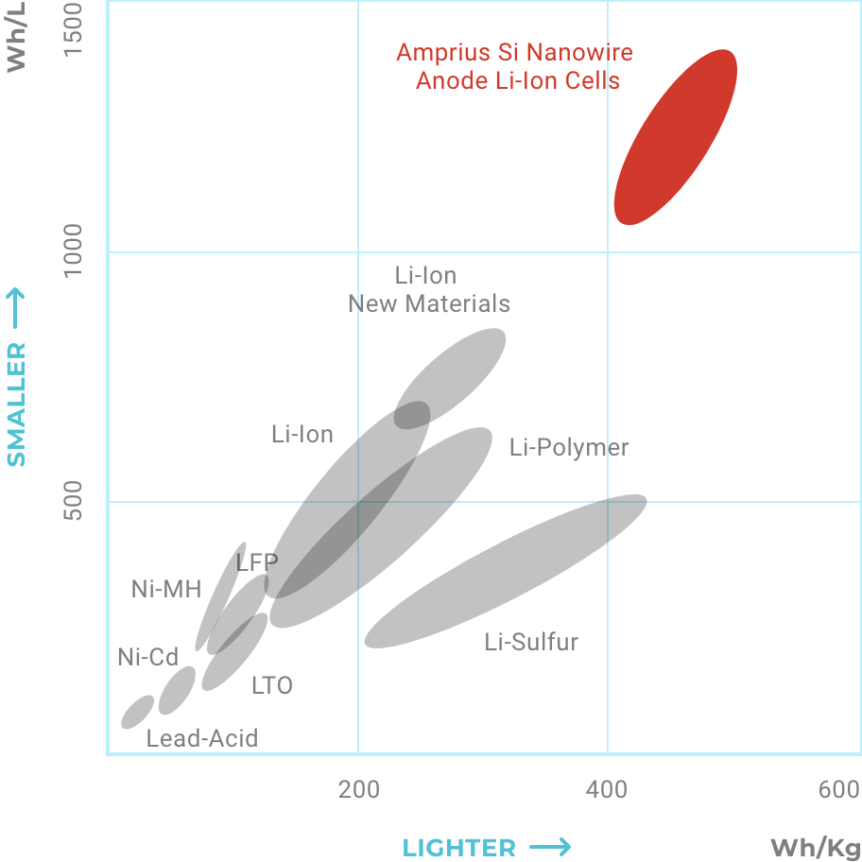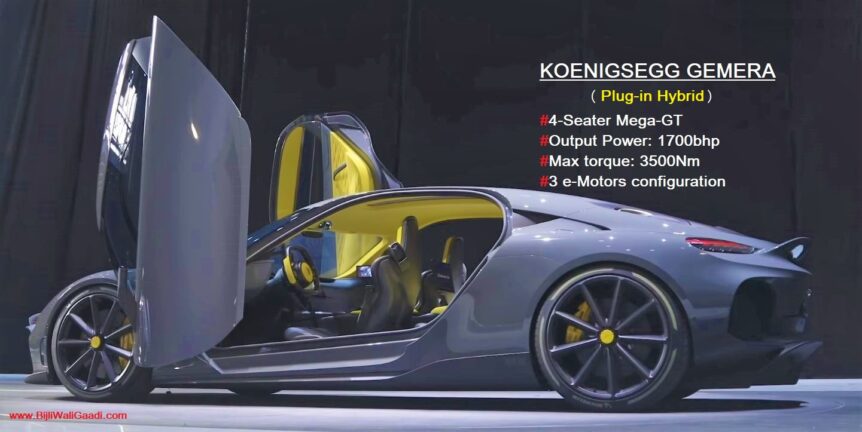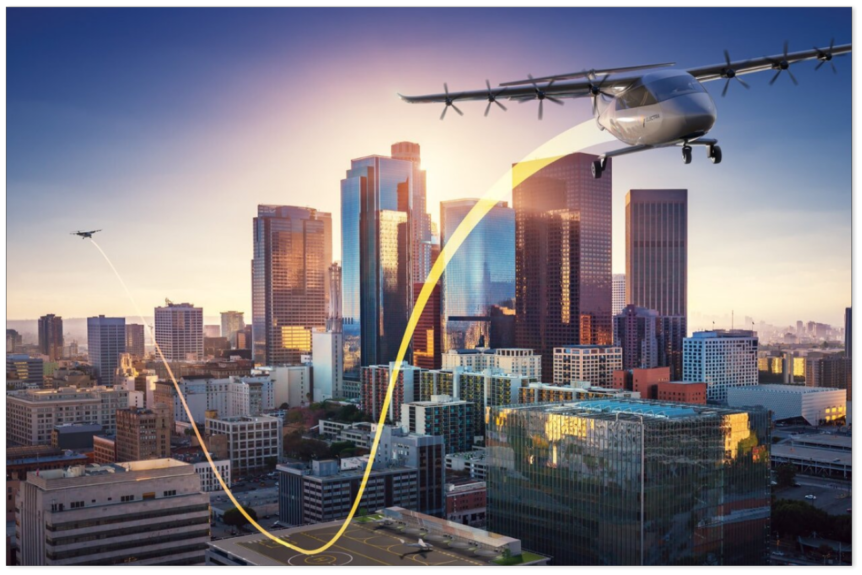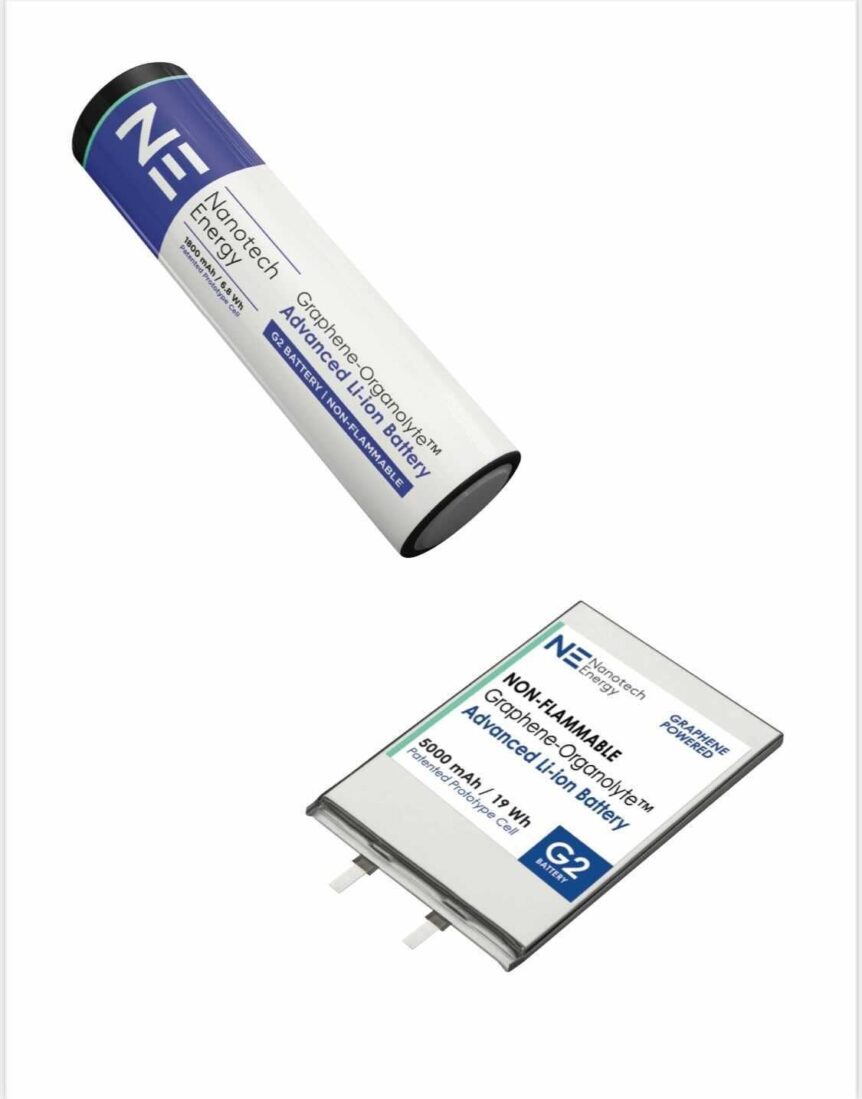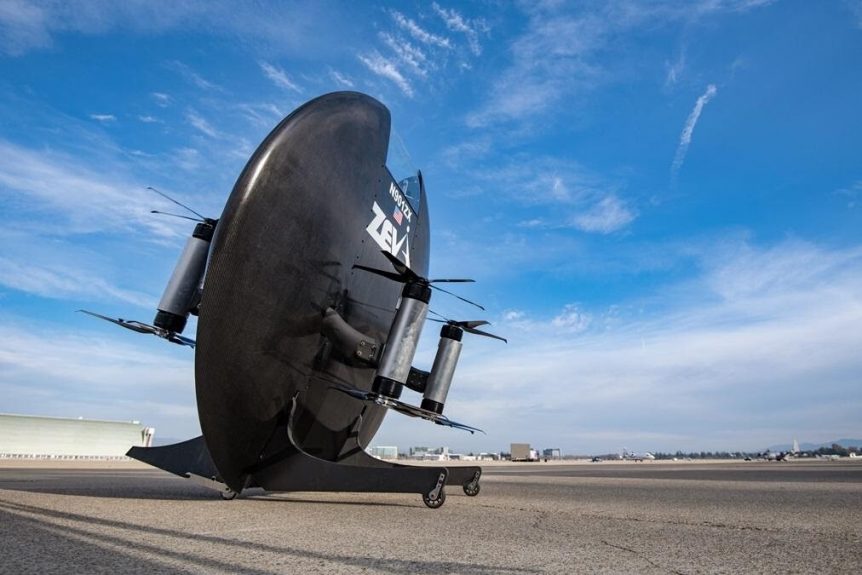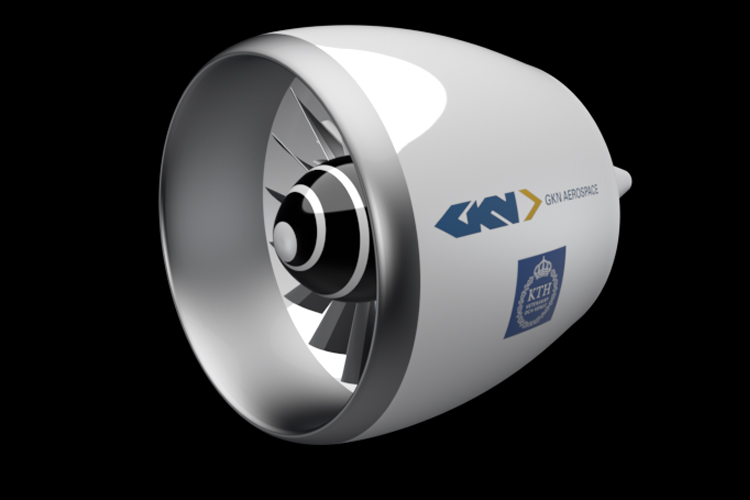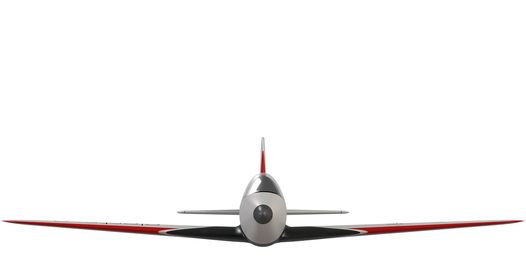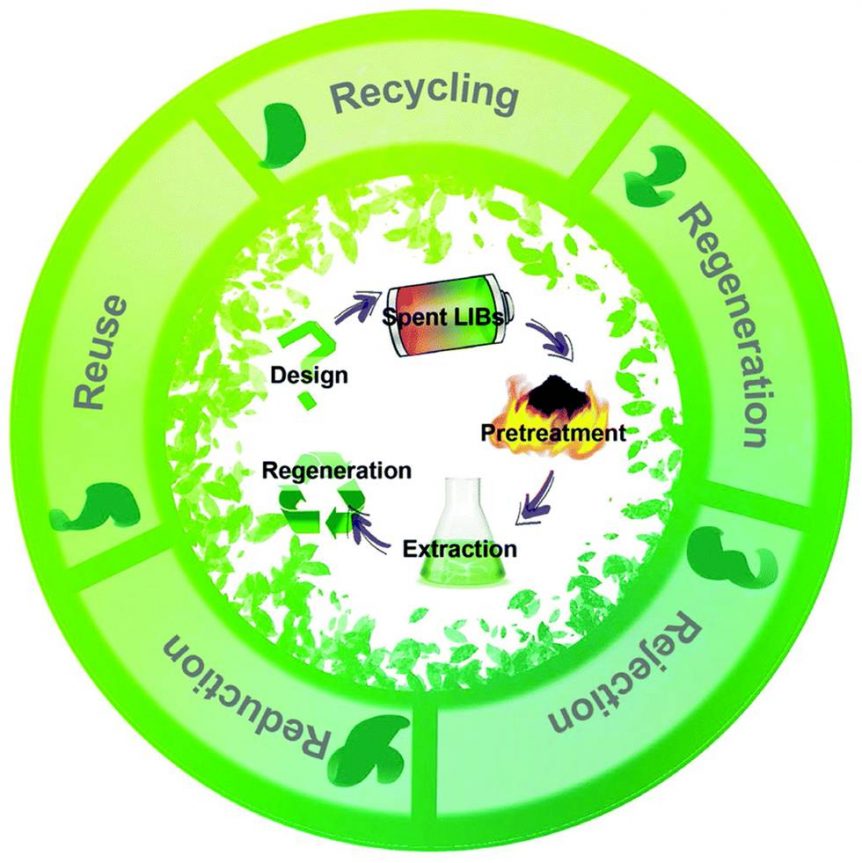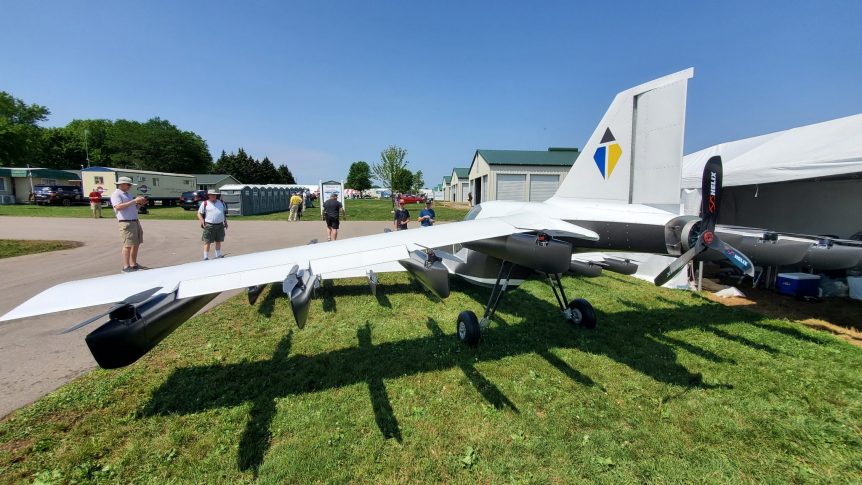Your editor’s first outing at an electric aircraft symposium was in 2009. At that meeting, Dr. Yi Cui, Stanford professor and battery expert, talked about silicon and its energy density being so much greater than that for graphite. He predicted huge advances for battery chemistry – and now he’s delivering. His firm, Amprius, is shipping 450 Watt-hour per kilogram batteries. Unlike many such companies, Amprius is not projecting these numbers several years out, but delivering now. According to their February 8 press release, Amprius sent its first batch of the energy-dense cells, “…To an industry leader of a new generation of High-Altitude Pseudo Satellites (HAPS).” Your editor guesses that leader is Zephyr, acquired by Airbus and setting endurance records on solar and battery power since its introduction in 2017. One reached 76,100 feet in a 2021 campaign, spending over 36 days (in two flights) at stratospheric heights and equaling the sailplane altitude record set by the Perlan Project in 2018. …
Electron’s 2024 Round the World Plans
Teofilo Leite has been refining a beautiful twin-motor glider for the last decade. Apparently he’s moving on to a five-seat, four-motor, dual-propeller beauty that is set to take on the world. The Electron 5 looks a great deal like a larger Electron 2, which has been flying in various configurations for the last decade. Electron Aviation, with representatives in The Netherlands and Australia states, “Our Electron 2, a two-seater battery-electric aircraft (Teofilo’s earlier design), is the flying proof that our energy efficient aircraft designs deliver outstanding performance. Whilst being well within inside the 600-kilogram (1,320 pound) ultralight microlight [regulations], it achieves 3 hours flying time during which it can cover 300 kilometers (186 miles).” Electron 2 flies its pilot and passenger on 7.5 kilowatt hours per hour of flight. Its three-hour endurance would mean a battery of at least 22.5 kilowatt-hours. Continued improvement to the Electron 2 required “30,000 design and engineering hours and several re-designs.” The latest iteration “has …
Koenigsegg’sTorque-Dense Electric Motor and Hybrid Drive Train
Koenigsegg (Cone-igs-egg), a Swedish car maker that enjoys shocking with its sticker prices, is going hybrid with a new, torque-dense electric motor and hybrid drive train. The Swedish car maker is known for its ultra-exclusive, ultra-high-performance vehicles, which have even undone the Stig, anonymous race driver on the BBC Series Top Gear. David Koenigsegg’s Gemera manages as much as 250 mph on a two-liter, three-cylinder engine, augmented by a set of three electric motors. Describing him as, “an inveterate tinkerer” who squeezes “extraordinary amounts of power out of internal combustion engines,” Clean Technica explains the “breakthrough products that could transform the world of electric cars.” One “breakthrough” would seem to be a package of a three-cylinder engine coupled to some powerful electric components. The “Tiny Friendly Giant (TFG) engine pumps out 600 horsepower (450 kilowatts) and weighs only 70 kilograms (154 pounds). It has no camshafts, relying instead on solenoid-actuated, artificial-intelligence-controlled valves to let the fuel and air in and …
Electra Attracts Customers, Investors and Landing Sites
Electra Aero has found worldwide interest in its electric ultra-short take-off and landing airplane, an eight-motor craft capable of taking off and landing across most jet-size runways. Producing such an aircraft takes great design, appropriately-designed landing sites, a well-integrated infrastructure, and financial backing for the total package. Electra Aero for the Design Powered by a hybrid generator driving four electric motors, Electra Aero’s aircraft uses “blown lift” to take off over very short distances – less than 150 feet, according to the company. Ben Marchionna, director of technology and innovation at Electra Aero, explains, “eVTOLs use electric propulsion to take off and land vertically – many of these concepts then transition from vertical flight to forward flight with a wing providing the lift once in cruise… Vertical flight requires significantly more power, resulting in an enormous payload, range, and cost penalty. eSTOLs use electric propulsion and an aerodynamic technique called blown lift to takeoff over distances as short as 100 …
Nanotech Energy – A “Solution” to the Lithium Battery?
Hot Pockets Introduced at this year’s CES (formerly the Consumer Electronics Show), Nanotech Energy’s Graphene-Organolyte™ Advanced Li-ion Battery (winner of a CES 2022 Innovation Award) merits a look. At least partly intended to stop battery fires, always hot news despite their relative rarity (compared to the 170,000+ petrol car fires every year), Nanotech explains its concern. “A battery, if shorted, could become a fireball bomb nearly impossible to extinguish using conventional techniques. In February 2018, the U.S. Consumer Product Safety Commission reported over 25,000 overheating and battery fire incidents involving more than 400 types of consumer products over a five-year period. Clearly, building safer batteries will be critical for the future of energy storage technology.” Keep in mind that “consumer products” include cell phones, laptop computers, and even e-cigarettes, as demonstrated here. These dangers show the need for a safe solution. Nanotech promotes its Organolyte non-flammable electrolyte as that solution, noting it will not support an open flame. Dr. Jack …
Zeva Zero – the Return of the Puffin?
Dreams of flight often include the dreamer wearing a silk scarf, if not a cape. We would love to emulate our super heroes with all their startling dexterity. A group in the Puget Sound area is making part of that dream come true. Starting with radio-controlled models a few years ago Zeva Aero has progressed to a full-scale unit that will carry an individual Superman style, with the pilot/passenger peering through a transparent shield. Needing only a 30-foot by 30-foot landing area, Zeva’s Zero boasts the ability to hoist a 220-pound person vertically, tilt over and take them 50 miles at up to 150 miles per hour. Zero’s eight electric motors provide a degree of redundancy and safety, enabling flight with a few motors not at their full potential (an electrical pun there). The firm says, “ZERO is a new class of aircraft that blends the best features of multi-copter with streamlined wing-body for improved range and efficiency.” The …
The EleFanT in the Room
Electric Ducted Fans (EDF) may soon show some promise in full-size flight. Several projects are under way, including EleFanT, an interesting development in Germany by GKN and KTH (the Swedish Royal Institute of Technology). First, though, we’ll look at two stateside projects. David Ullman’s IDEAL EDFs fans are nothing new in the model aviation world, often powering large-scale models of actual jet fighters or trainers. Such model motors, combining their thrust, can augment lift and propulsion on light aircraft, and a few larger projects are attempting to utilize that promise. David Ullman, in Independence, Oregon has flown a Jabiru he rebuilt from a wreck with its Jabiru engine providing the main power, but augmented in thrust and lift by four small electric ducted fans (EDFs). The arrangement is a partial demonstration of IDEAL, which stands for “Integrated Distributed Electric – Augmented Lift” flight, using “thrust from distributed electric propulsion to improve the lift and drag performance of the aircraft during …
Electron: an Electric Kit LSA with Promise
Since we recently promoted a survey on interest in a kit-built Light Sport Aircraft that would be powered electrically, it’s interesting to see such a craft nearing first flight in Australia. Electron looks a great deal like Zara Rutherford’s record attempt Shark, a Slovakian European ultralight. Even with fixed gear rather than the retractables on Zara’s Shark, the Electron still promises a cruise speed of 250 kilometers per hour (155 mph). 75 kilowatts (100.5 horsepower) can urge the plane to that speed, considerably faster than a Cessna 150 on the same power. Weighing less than 600 kilograms (1,320 pounds), Electron is 280 pounds lighter than a 150 at full gross weight. Its eight-meter (26.24 feet) wingspan and 9.29 square meters (99.99 square feet) of wing area gives a slightly higher span loading than a 150, and a significantly greater wing loading. Still, Electron promises much greater speed. We will await rate of climb figures. Carbon fiber, “targeted use of aramid …
Recycling Lithium Batteries – Cheaper, Better, Greener?
We would all love less expensive batteries that are safe, reliable, and possibly even better performing than what we have now. What if recycling our throw-aways gave us “new” batteries with refined materials that improve their performance? A current paper from the Royal Society for Chemistry may hold a key to producing such cheaper, better batteries. The complete entry expands on the idea of reclaiming materials in used batteries in an efficient, cost-effective way. The findings come to light with good timing, considering recent concerns over lithium mining and availability. Conflicted over Conflicts Battery materials are selected for factors such as their inherent ability to shuttle ions between a cathode and anode, the positive and negative poles of a battery. Electrodes may contain lithium, cobalt, and nickel, among other elements. Cobalt, for instance, is a so-called “conflict mineral,” sourced from places like the Democratic Republic of the Congo using child labor. Such minerals are often mined using “artisanal and small-scale …
The TeTra Mk. 5
The TeTra Mk. 5 is obviously not the first of its kind. A little history shows its origins in the Boeing GoFly completion – in which the team won a $100,000 “Disruptor” prize from Pratt & Whitney, the long-time engine makers. As stunning, and confusing, the appearance of their GoFly entry was, it did not prepare your editor for the 32-rotor (plus pusher propeller) single-seater shown flying in California recently. They flew SN2 of the Mk. 5 model in unpiloted mode, and will begin sales with serial number 3 at a yet unannounced price. One can speculate, though. Model aircraft motors such as the Hacker Q-100 cost 999 euros (about $1,163.00) each. (The makers have cleverly taped over the maker’s name on close-ups of the Oshkosh display model.) Even a lower-budget Chinese motor will cost around $500 each. An appropriate electronic speed controller (ESC) will be about half that of the motor. The 32-inch diameter carbon-fiber propellers would cost …

